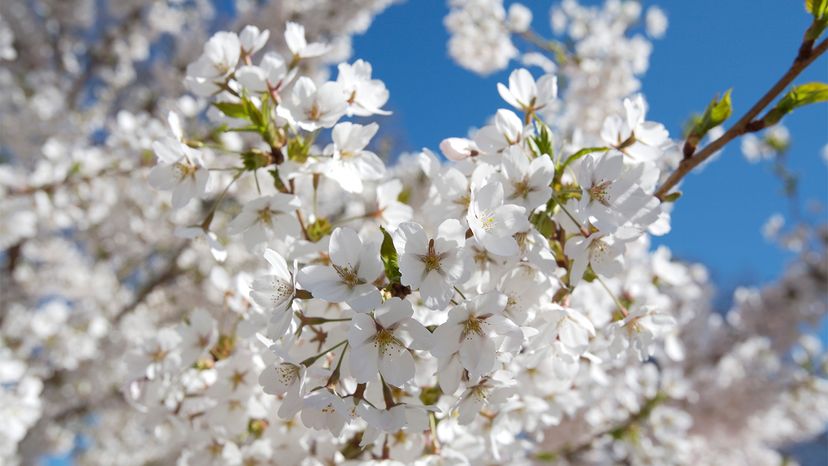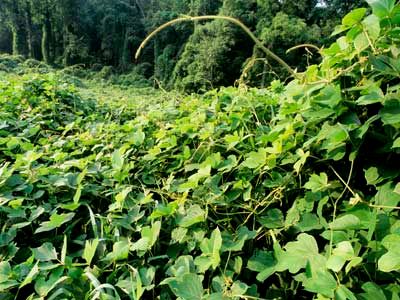OK, OK, so the tree smells. But it's a tree. It gives us oxygen. In this dire world of obvious climate change — extreme storms, drought and countless associated maladies — don't we need all the trees we can get? Don't we need more tree huggers and fewer tree haters?
Well, yes, say Beasley (who is also a landscape architect) and countless other arborists and environmentalists. But the issues with the Bradford pear are motley and manifold.
Its top offenses, aside from the smell, are that it's invasive to the United States. A version of it, the Callery pear, was brought over from China to the Northwest U.S. in the early 20th century, in an effort led in part by botanist David Fairchild, who was partially responsible for bringing Japanese cherry blossoms to Washington, D.C.
The Callery was thought to be resistant to fire blight, a serious bacterial disease that affects other pear trees. The idea was to use the Callery "as a rootstock onto which varieties of the European pear could be grafted."
Fast-forward to 1960: Tree scientists at the U.S. Department of Agriculture in Glenn Dale, Maryland, released the Bradford pear — a cultivar of the Callery — to the public. It didn't matter that it was pear-less, despite its name. "People went bonkers," in a good way, The New York Times noted.
The tree seemed perfect for suburban America: a nice, neat canopy shape; not too big; seemingly hardy and showy colors in spring and fall. It became commonplace in the U.S., from north to south, east to west.
"Much like a crape myrtle is today, for a time this was the hot tree for contractors and home builders to plant," Beasley says. "It was easily sourced, fast-growing ... and virtually indestructible." All was well in the world.
And then it was not.


